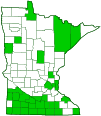downy hawthorn
(Crataegus mollis var. mollis)
Conservation • Wetland • Description • Habitat • Ecology • Use • Distribution • Taxonomy
Description |
||
Downy hawthorn is a slow-growing, relatively long-lived, small tree that rises from a woody, branching root system. In wooded areas it usually has a single stem and may be 20′ to 40′ in height and up to 12″ in diameter at breast height. In open areas it usually has multiple, shorter stems forked that are near the ground. The crown is densely branched. In wooded areas it is rounded, in open areas widely spreading. There are usually, about 70% of the time, large, compound thorns near the base of the stem and on the larger branches. There are also single, smaller, simple thorns at the nodes of the branches. The simple thorns are slender, 1¼″ to 2¾″ long, and usually straight. They are chestnut brown and shiny on young twigs, light gray to nearly black on older twigs. The bark is thin and gray. Bark on young branches and trunks is smooth. Bark on older branches and trunks is separated into flat, plate-like scales. Twigs are thick and coarse. They are light green and densely covered with long, white hairs early in the season of the first year, later covered with long, soft, woolly hairs; brown or grayish-brown and hairless the second year; and gray and hairless in the third year. Young twigs have minute, pale, round dots (lenticels). Buds are plainly visible, not submerged or partially hidden. They are covered with 2 or more dark red, thick, hairless, somewhat fleshy scales. They are gummy when pressed between the fingers. The terminal bud is round to egg-shaped. The leaf scar is flat or only slightly raised, and has 3 bundle scars. The pith is round or nearly round and solid, not spongy. The leaves are alternate and deciduous. They are on slender, light green to reddish-green leaf stalks (petioles). The petioles are ⅜″ to ¾″ long when the tree is in flower, ¾″ to 1¾″ long at maturity. Early in the season they are densely covered on all surfaces with short, soft, matted or tangled, woolly hairs. They become sparsely hairy late in the season. They are not winged and do not have red glands on the margins. At the base of each petiole is a pair of leaf-like appendages (stipules). The stipules are ⅛″ to ⅜″ long, crescent-shaped, and coarsely toothed. The leaf blades at flowering time are about half grown, thin, and hairy above and below. At maturity they are thick, firm, broadly or very broadly egg-shaped, 2¾″ to 5″ long, and 2⅜″ to 4¾″ wide. They are broadly rounded to almost wedge-shaped, occasionally somewhat heart-shaped, at the base, and angled at the tip. They have 1 to 6 pairs of lobes on each side. The lobes are relatively deep, 5 ⁄16″ to 1″ long. Early in the season, when the leaves unfold, the upper surface is densely covered with short, pale hairs and the lower surface is covered with short, soft, matted or tangled, woolly hairs. At flowering time both surfaces are hairy. At maturity, the upper surface is dark green, dull, rough to the touch, and sparsely covered with short, stiff hairs. The lower surface is pale green, dull, and covered short, soft hairs, especially but not only along the main veins. The veins are impressed on the upper surface and raised on the lower surface. There is a prominent midvein with primary veins extending to the tip of each lobe. The margins are coarsely, singly- or doubly-toothed with sharp, forward pointing teeth. The teeth either are not tipped with glands or the glands are too small to be seen without magnification. The inflorescence is a branched, flat-topped cluster (corymb) of 8 to 17 flowers at the ends of twigs and branches. The corymbs are about 1½″ to 3″ in diameter. The stalks of the corymb and stalks of individual flowers are densely hairy. Each individual flower is ⅝″ to 1¼″ in diameter. There are 5 greenish sepals, 5 white petals, and 17 to 20, stamens. The anthers are white to pale yellow. The fruit is a seed capsule with a fleshy, outer covering (pome). The pome is globe-shaped and ⅜″ to ¾″ in diameter. It is green at first, becoming red when it reaches maturity in late mid-September to early October. |
||
Height |
||
Up to 40′ |
||
Flower Color |
||
White |
||
Making the Identification |
||
The terminal shoot of a twig produces leaves whose shape may not be representative of the species. Identification should be made using leaves occurring on short, lateral shoots of an older twig. |
||
Similar Species |
||
Fireberry hawthorn (Crataegus chrysocarpa var. chrysocarpa) is a shrub rising on 1 to 10 or more stems. It is no more than 18′ tall at maturity. The stems and branches have simple thorns but not compound thorns. The twigs are hairless. First-year twigs are brown. There are usually 3 or more red glands on the margins. The leaves are much smaller, no more than 2¾″ long and 2¼″ wide. The flowers are smaller, no more than ⅞″ in diameter. There are usually 6 to 10, sometimes 15 to 20, stamens. Quebec hawthorn (Crataegus submollis) is always a shrub, never a tree. There are no compound thorns. The twigs are slender. The leaves are smaller and have smaller, shallower lobes. The flowers are no more than ⅞″ in diameter, and have only 7 to 10 stamens. |
||
Habitat |
||
Moist to moderate moisture. Forest edges and openings, thin woodlands, brushy thickets. Full to partial sun. |
||
Ecology |
||
Flowering |
||
Early May to late May |
||
Pests and Diseases |
||
Cedar-hawthorn Rust (Gymnosporangium globosum) Entomosporium Leaf Spot (Diplocarpon mespili) North American gypsy moth (Lymantria dispar dispar) |
||
Use |
||
|
||
Distribution |
||||
|
Sources |
|||
| 3/26/2023 | ||||
Nativity |
||||
Native |
||||
Occurrence |
||||
Common |
||||
Taxonomy |
|||
| Kingdom | Plantae (Plants) | ||
| Subkingdom | Pteridobiotina | ||
| Phylum | Tracheophyta (Vascular Plants) | ||
| Class | Magnoliopsida (Dicots) | ||
Order |
Rosales (Roses, Elms, Figs, and Allies) | ||
Family |
Rosaceae (Rose) | ||
| Subfamily | Amygdaloideae | ||
| Tribe | Maleae | ||
| Subtribe | Malinae | ||
Genus |
Crataegus (hawthorns) | ||
| Section | Coccineae | ||
| Series | Molles | ||
| Species | Crataegus mollis | ||
Subordinate Taxa |
|||
|
|||
Synonyms |
|||
Crataegus albicans Crataegus arkansana Crataegus cibaria Crataegus lacera Crataegus limaria Crataegus meridionalis Crataegus mollis var. gigantea Crataegus mollis var. sera Crataegus pedicellata var. albicans Crataegus placens |
|||
Common Names |
|||
Arnold hawthorn downy haw downy hawthorn red haw red hawthorn summer haw turkey-apple |
|||
Glossary
Corymb
A flat-topped or convex inflorescence in which the stalked flowers grow upward from various points on the main stem to approximately the same horizontal plane. The outer flowers open first.
Lenticel
A corky, round or stripe-like, usually raised, pore-like opening in bark that allows for gas exchange.
Petiole
On plants: The stalk of a leaf blade or a compound leaf that attaches it to the stem. On ants and wasps: The constricted first one or two segments of the rear part of the body.
Pith
The spongy cells in the center of the stem.
Pome
A fruit with a central seed bearing core enclosed in thick flesh, e.g., an apple or pear.
Stipule
A small, leaf-like, scale-like, glandular, or rarely spiny appendage found at the base of a leaf stalk, usually occurring in pairs and usually dropping soon.
Visitor Photos |
|||||
Share your photo of this plant. |
|||||
| This button not working for you? Simply email us at info@MinnesotaSeasons.com. Attach one or more photos and, if you like, a caption. |
|||||
|
|||||
MinnesotaSeasons.com Photos |
|||||
Tree |
|||||
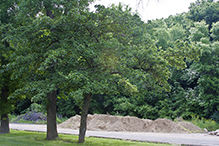 |
|||||
Bark |
|||||
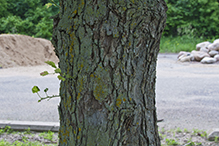 |
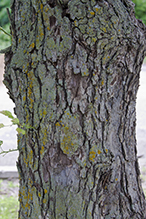 |
||||
Leaves |
|||||
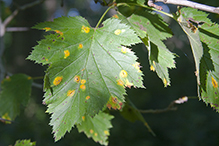 |
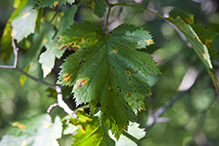 |
||||
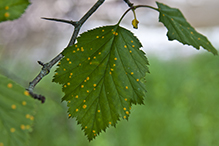 |
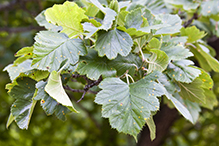 |
||||
Fruit |
|||||
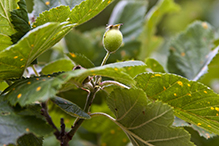 |
|||||

Slideshows |
||

Visitor Videos |
|||
Share your video of this plant. |
|||
| This button not working for you? Simply email us at info@MinnesotaSeasons.com. Attach a video, a YouTube link, or a cloud storage link. |
|||
Other Videos |
|||
| Downy Hawthorn - Plants of the World oldstuff4all |
|||
About
Published on Aug 26, 2013 The Downy Hawthorn is a tree high 10--13 m and can be found in North America. It's an uncommon plant. |
|||

Visitor Sightings |
|||||
Report a sighting of this plant. |
|||||
| This button not working for you? Simply email us at info@MinnesotaSeasons.com. Be sure to include a location. |
|||||
|
|||||
MinnesotaSeasons.com Sightings |
|||||

|
Created: Last Updated: © MinnesotaSeasons.com. All rights reserved. |
